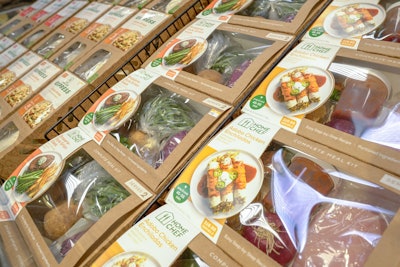
3D printing is a highly disruptive advanced technology that, until recently, has been primarily used in the automotive and industrial manufacturing sectors. However, 3D printing is now being used as a replacement for stamping or injection molding processes in the consumer packaged goods (CPG) sector to create customized products and component parts. This technology helps companies reduce costs in many areas of business, improve customer service and ultimately help gain a competitive advantage by being adaptable to market change.
Food and beverage manufacturers are increasingly investigating the use of advanced technologies to innovate, simplify and deliver products to the consumer faster, more efficiently and most profitably. Better inventory management and the simplification of the supply chain means higher profits.
But, can 3D printing be one of those technologies? What if 3D printing can assist manufacturers in delivering innovation and speed while reducing food waste and raising profits?
Here’s two ways 3D printing technology is beginning to impact the food manufacturing industry.
3D-printed, food-grade containers and packaging applications
One of the highest costs that food manufacturers face is the packaging containers for food products. What if retailers, either manufacturer-owned or a larger food chain, were able to 3D print food-grade containers right in the store? What would that do to the food industry?
Doing so could transform the industry and the supply chain, drastically reducing or even eliminating the need to store individual containers of food. Instead of stocking hundreds of products in individual containers of packaged foods, retailers could 3D print an individual food-grade container on-site for the consumer. The consumer could then select the product that goes into the container. Talk about customization.
The traditional method of forecasting an individual SKU of a food product, producing it and shipping it can be a supply chain nightmare. It results in food waste, higher inventory costs to the manufacturer, higher costs to the consumer and requires pinpoint forecasting and lots of expensive storage space. Food-grade 3D printing will allow manufacturers and retailers to store products in tanks, vats, kegs, etc. and then 3D print individual containers for consumers to fill with product. This will allow for creativity amongst consumers, making a manufacturer’s product more enticing and simplifying the supply chain to reduce costs and increase profits.
For most food manufacturers, the process of making multiple size pack units of the same product can be a production headache. Between the retailer asking the manufacturer for certain case sizes and the consumer asking for different pack quantities, hundreds, if not thousands of SKUs are added to the producer's portfolio. This increases manufacturing, storage and distribution costs while reducing profits and depleting shelf life. With 3D printing, individual SKUs will no longer be shipped from manufacturing plants. Instead, shipments will be made in bulk, creating full packaging and providing the ability to simply ship labels. This will enable companies to concentrate on bulk products and not fringe products, enterprise asset management improvements with smaller machines, inventory reduction, reduced time to market and an overall simplified supply chain. It will also continue the trend of consumers customizing their food products.
3D-printed food
Now you might think this is a stretch or something out of a science fiction movie. Truth is, many food companies are already experimenting with this process. Many foods are a mix-and-pack product, meaning ingredients are mixed together, then run through a machine that creates the product, which is then cooked, baked, etc. What if food ingredients could be put into a 3D printer that produces a finished product? Companies are trying it for product prototyping and to study the customization of mass-produced food products. It could be impossible to replace all food production processes with 3D printing, but there are several options now, and major food companies are experimenting with the technology.
3D printing could help companies create food products quickly and inexpensively. In addition to the actual manufacturer, this technology, when sold to the consumer, can allow them to make their own food products, significantly altering the purchase process of food. Instead of buying packaged finished products, consumers would buy ingredients that would then be produced at home using 3D printing. This could take customization and fresh to entirely new levels.
Revolutionizing food manufacturing
Food product customization, product innovation and manufacturer-to-consumer partnering are just the beginning of where this can go. 3D printing could revolutionize the food industry. With the drive for product customization, sustainability, traceable products and time savings, this technology can alter how people buy food, how food is made and thereby significantly change the process of food manufacturing and the resulting supply chain. The technology is just starting to find its way into food manufacturing, but it could be a major disruptor in the future.
Manufacturers of food, both large and small should be interested but also cautious with 3D printing, and should start analyzing the impact on their processes and systems now in order to compete later down the line.
To remain competitive, food manufacturers should adapt and manage disruptions to be the agile effective enterprise. 3D printing is just one advanced technology that is now impacting food and beverage manufacturing and moving the industry into the technology future.


















